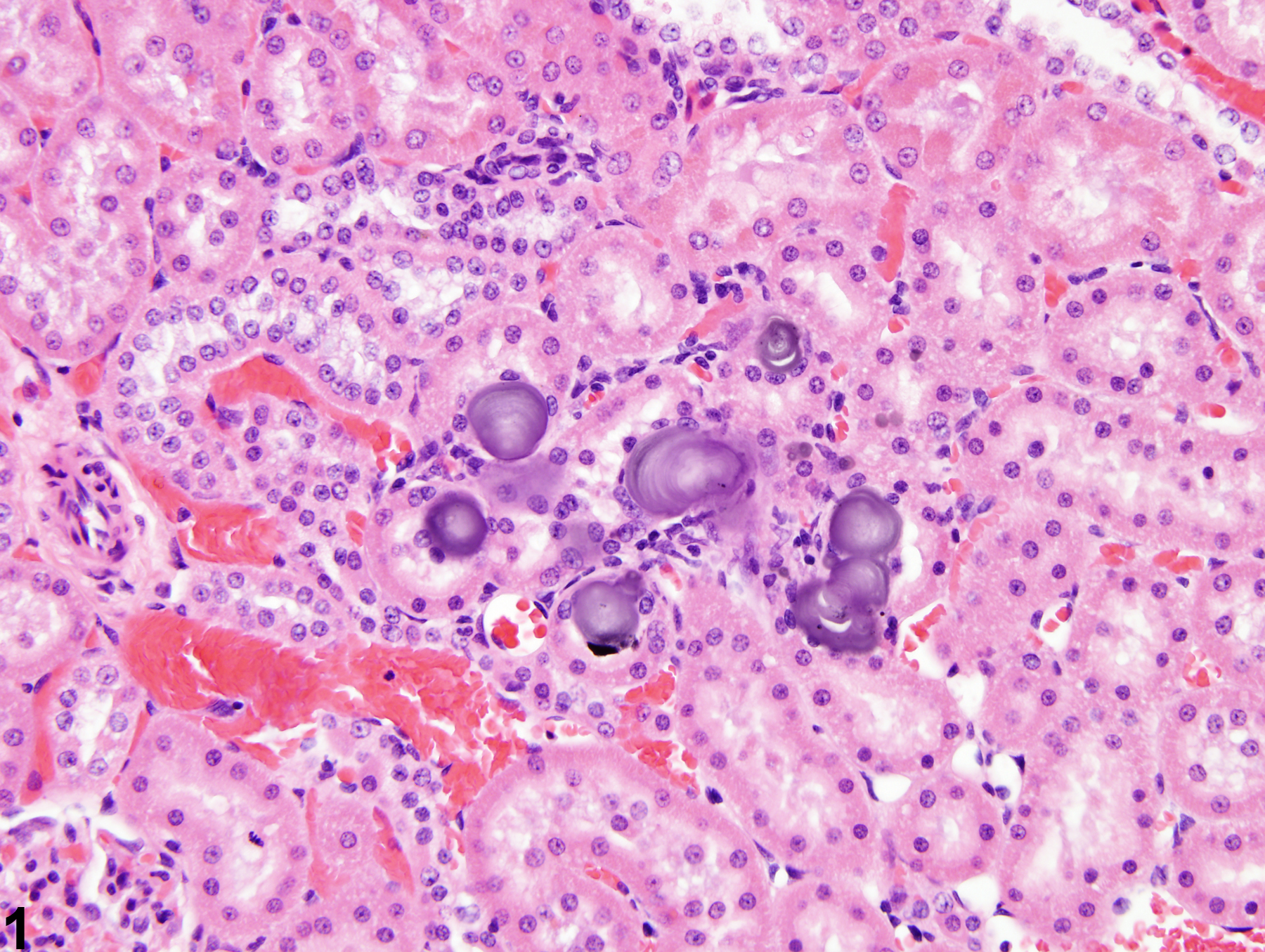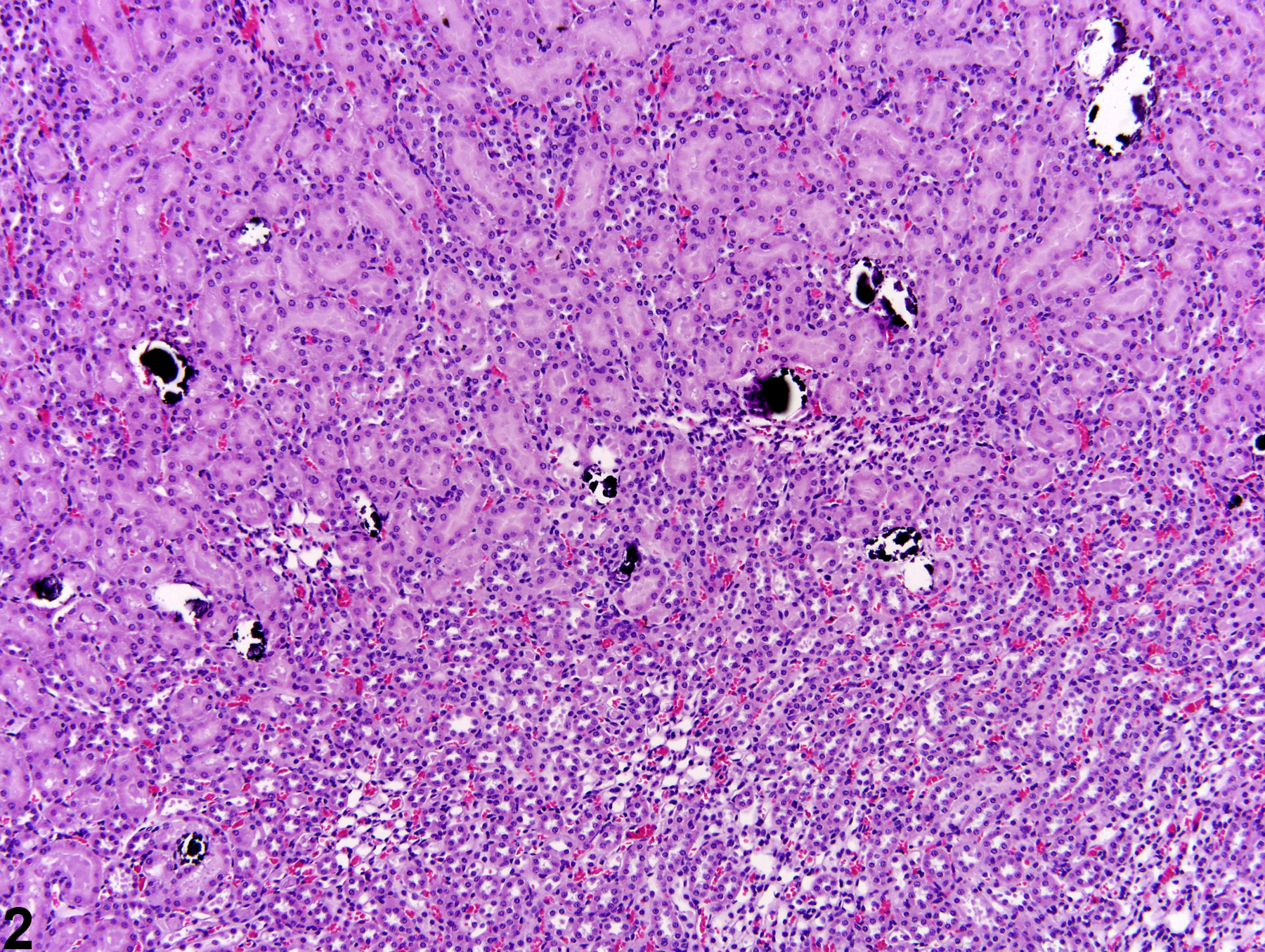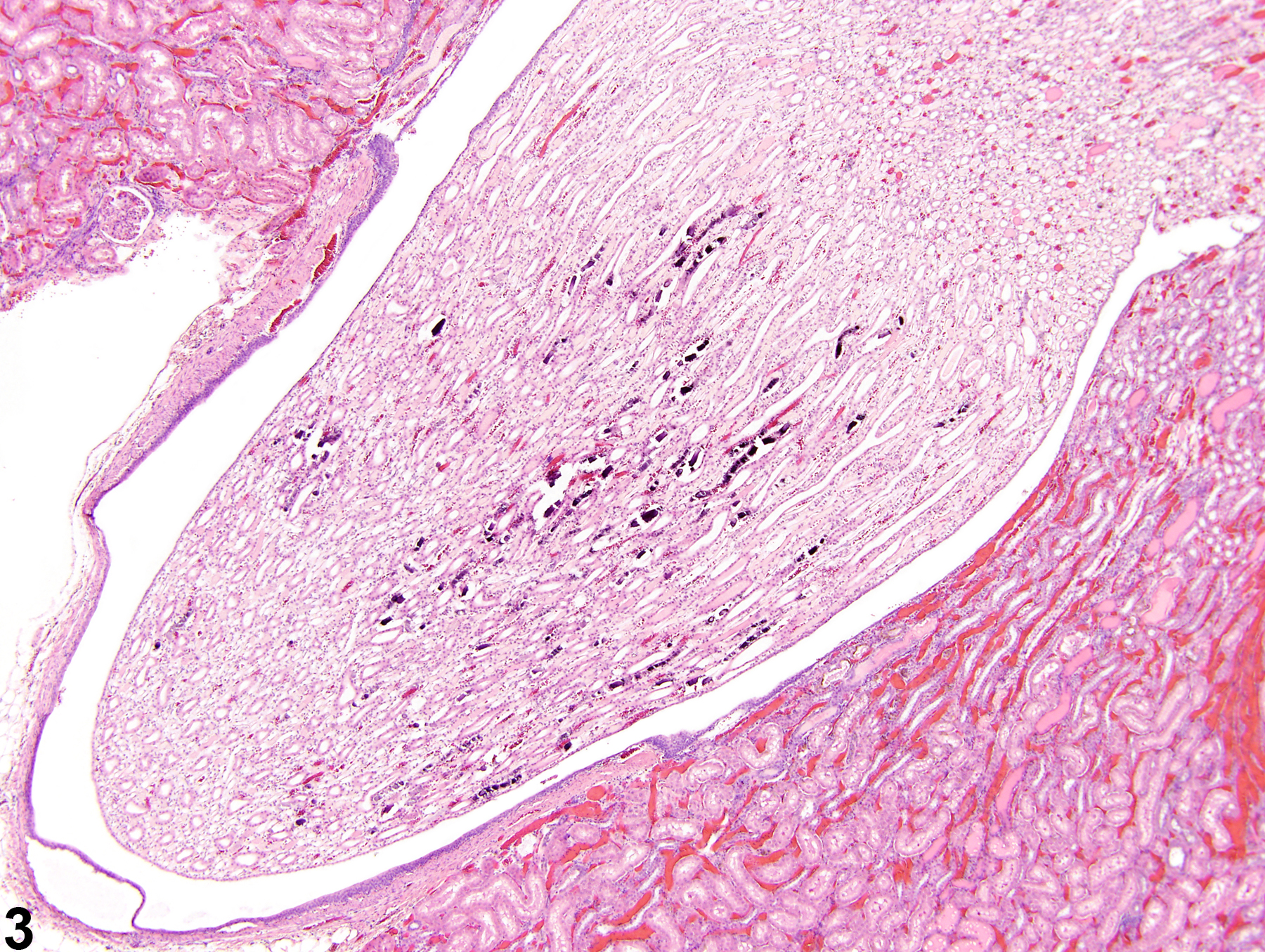Urinary System
Kidney - Mineralization
Narrative
Gopinath C, Prentice DE, Lewis DJ. 1987. Atlas of Experimental Toxicological Pathology. MTP Press, Lancaster, UK, 77-88.
Ritskes-Hoitinga J, Beynen AC. 1992. Nephrocalcinosis in the rat: A literature review. Prog Food Nutr Sci 16:85-124.
Abstract: http://www.ncbi.nlm.nih.gov/pubmed/1620876
Kidney - Mineralization in a male F344 rat from an acute study. Spontaneous mineralization of cortical tubules is present.




